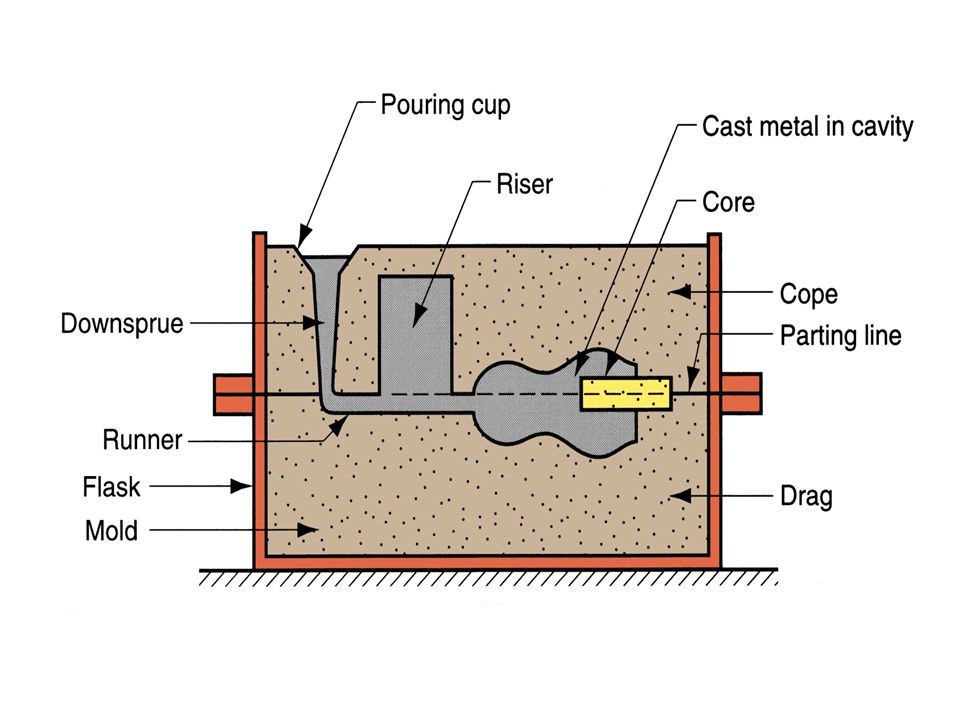Have you ever stopped to think about how information gets from one place to another, or how a picture from your computer screen ends up on your television? It’s a bit like aiming a shot, isn't it? You have a source, a destination, and a clear intention to send something specific, whether that's a type of data or a visual display. This idea of sending things with a purpose, of directing them, is quite interesting, you know? We often use the term 'casting' to describe this action, and it comes up in all sorts of places, from the way computers handle different kinds of numbers to how we share what’s on our screens with others in the room, or even across a wireless link.
So, too, it's almost as if you're sending out a signal, or perhaps a piece of information, and you want it to land just right, exactly where it's supposed to go. This whole process of 'casting' can mean a few different things depending on where you encounter it. It might be about changing one kind of data into another kind, making sure a number, for example, fits into a particular slot. Or, it could be about showing what’s on your laptop screen to a bigger display, like a TV, so everyone can see it more easily. It’s about making connections and ensuring things flow smoothly from one point to another, really.
That said, this article will explore these different ways we 'cast' things, looking at how it works in the world of computer programming, what happens when you try to send your screen to a television, and some of the quirks that can pop up along the way. We will, in a way, aim our focus at understanding these various forms of 'casting', trying to make sense of what happens when you try to direct information or visuals, much like you might direct an arrow towards a target. It’s all about getting things to where they need to be, after all, and making sure they arrive in the right form.
- Drive Ryan Gosling Costume
- Mbti Michelle Obama
- Melissa Diaz Comedian
- Stephanie Rodriguez Obituary
- Dog License Multnomah County
Table of Contents
- What is This "Casting Arrow" All About?
- A Clear Path- Casting Arrow in Code
- Pointer Pathways- Guiding the Casting Arrow - What are the rules?
- Numeric Precision- Directing the Casting Arrow
- When the Casting Arrow Misses the Mark- Sound Troubles
- Behind the Scenes- The Casting Arrow Protocol - Why is it running?
- Visual Flow- The Choppy Casting Arrow
- Getting the Message Across- A Summary of the Casting Arrow
What is This "Casting Arrow" All About?
When we talk about 'casting' in the world of computers and technology, it’s a concept that pops up in a few different places, and it’s actually pretty important. So, think of it like this: you have a piece of information, say, a number, and you want to use it in a situation where a different kind of information is expected, perhaps a date. You need to change that number's 'shape' or 'form' so it fits. This process of changing one type of data into another is what we often refer to as type conversion, and it’s a big part of what 'casting' means in programming, you know?
There's also the idea of sharing your screen, like when you want to show a movie or a presentation from your laptop on a bigger screen, maybe a television. That's also called 'casting'. It's about sending a visual signal, like a stream of pictures, from one device to another. In both cases, whether it’s changing data types or sharing screens, the goal is to direct something from its original state or location to a new one, making sure it arrives in a usable form. It's about making things compatible, in a way, so they can work together.
Basically, this concept of 'casting' helps us make sure that different parts of our digital world can communicate effectively. Without it, things would be a lot more rigid, and our devices wouldn't be able to talk to each other as easily as they do now. It’s a fundamental idea that helps everything flow, whether it's the precise manipulation of data inside a computer program or the simple act of putting your laptop's display up on a large screen for everyone to see. It’s about ensuring that the 'arrow' of information or display hits its intended mark, really.
- Healing Facelift Recovery Pictures Day By Day
- Best Dramas With A Twist
- Coleslaw Pregnancy
- Stock Tanks For Fish
- Austin Country Club Wedding
A Clear Path- Casting Arrow in Code
When you're writing computer programs, there are times when you need to change one type of information into another. For example, you might have a string of characters that looks like a date, and you want the computer to treat it as an actual date object so you can perform date-related actions with it. This is where the idea of 'casting' or 'converting' comes into play. It's about telling the computer how to interpret or reshape the data it's handling, you know?
It's often suggested that using a method called 'convert' is a better choice than just 'cast' in many situations. Why? Well, 'convert' usually comes with extra options, like a 'style' parameter, that give you more control and make your intentions clearer. This helps to avoid confusion, which is pretty important when you're dealing with precise instructions for a computer. When you're very clear, there's less room for the computer to guess, and that’s a good thing, really.
Think about an example: if you were to write 'cast('20130302' as date)', you might wonder what exactly would happen. What kind of date format is it expecting? How should it interpret those numbers? This sort of phrasing can leave a bit of a question mark, which is exactly what 'convert' aims to eliminate. By using 'convert', you're giving a more direct instruction, making the path of your 'casting arrow' much straighter and easier for the system to follow, leading to fewer surprises and a more predictable outcome, in a way.
There's also a slightly different way to approach this in some programming environments, like the Common Language Runtime (CLR). You might be used to changing an object's type by putting the new type in parentheses right before the object, like '(someclass) someobject'. But, you know, there's another way, a more recent discovery for some, that uses the 'as' keyword. This 'as' keyword provides a different kind of 'casting arrow', offering a potentially safer or clearer way to attempt a type change, especially if the change might not always be possible. It's about having options for how you direct your data, basically.
So, rather than just forcing a type change, the 'as' keyword gives you a way to try it out, and if it doesn't work, it simply results in nothing, instead of causing a program to stop. This subtle difference in how you aim your 'casting arrow' can be pretty important for how robust and error-free your computer programs turn out to be. It’s about choosing the right tool for the job, making sure your code is as clear and as resilient as it can be, which is always a good practice, honestly.
Pointer Pathways- Guiding the Casting Arrow - What are the rules?
When you get into more advanced programming topics, especially in languages like C, you often deal with things called 'pointers'. These are essentially addresses in the computer's memory, pointing to where a piece of information is stored. Sometimes, you need to change what kind of information a pointer is pointing to, and this is another form of 'casting'. It's like redirecting your 'casting arrow' to point at a different type of target, even if the underlying memory location stays the same, you know?
It's important to know that there are very specific rules about how you can 'cast' these pointers. These aren't just suggestions; they're laid out in official documents, like clause 6.3.2.3 of the C 2011 standard. These rules exist to make sure that when you change a pointer's type, you don't accidentally mess up the computer's memory or cause unexpected problems. It’s about maintaining order and safety in how information is handled at a very low level, basically.
For example, these rules cover situations where a pointer that points to one kind of object might be 'cast' to point to another kind of object. This means you can take a pointer that was, say, expecting a number, and tell it to now expect a block of text, or something else entirely. The rules dictate exactly when and how this is allowed, ensuring that your 'casting arrow' lands safely and correctly, without causing any crashes or strange behavior in your program, which is pretty vital.
One common way to do this is with something called 'static cast'. This method is often used to 'cast' pointers that are related in some way, or to convert a very general pointer, like a 'void*' (which can point to anything), into a more specific type. For instance, if you have a 'void*' pointer, 'static cast' helps you tell the computer, "Hey, this 'void*' is actually pointing to an integer," or "it's pointing to a specific kind of structure." It's about giving that generic pointer a clear, defined purpose, helping your 'casting arrow' find its precise mark.
Then there's 'dynamic_cast', which is used for converting pointers and references, often in situations where you're dealing with objects that belong to different but related classes, especially when those relationships are determined while the program is running. This type of 'casting arrow' is a bit more flexible and safer for certain scenarios, as it checks at runtime whether the conversion is actually possible. If it's not, it typically gives you a clear indication, rather than just going ahead and potentially causing a problem. It’s about making smart, informed conversions, honestly.
Numeric Precision- Directing the Casting Arrow
When you're working with numbers in programming, especially in languages like C++, you often encounter different types of numbers: whole numbers (integers, like 'int'), numbers with decimal points (like 'float' and 'double'). And, you know, sometimes you need to perform calculations that involve these different types, or you need to change a number from one type to another. This is another area where 'casting' becomes really important, like directing your 'casting arrow' to hit a specific numeric target.
People often ask about the best way to 'cast' between these different number types. For example, if you have a 'float' (a number with a decimal point, but with less precision) and you want to use it in a calculation that needs a 'double' (a number with a decimal point, but with more precision), you might need to 'cast' it. The choice of how you do this can actually affect the outcome of your calculations, which is pretty significant, in a way.
Consider a situation where you're performing division, like 'a / b'. If both 'a' and 'b' are whole numbers, the computer will usually give you a whole number as the result, even if there's a remainder. For instance, 7 divided by 2 would result in 3, not 3.5. But, if you want a result with a decimal point, you need to tell the computer to treat at least one of those numbers as a decimal type, like a 'double'.
So, what you can do is 'cast' one of the numbers in the division to a 'double'. For example, if you have 'f' which is a 'float', and you want to divide it by another number, you might write something that tells the computer to treat 'f' as a 'double' for that calculation. When you 'cast' one of the numbers to a 'double', the computer is pretty smart: it will then automatically change the other number involved in the division to a 'double' as well. This is called implicit conversion, and it means that the division (and its result) would now be a floating-point number, giving you that decimal precision you were looking for. It’s a very common way to ensure your 'casting arrow' of calculation hits the precise numeric value you're aiming for, honestly.
When the Casting Arrow Misses the Mark- Sound Troubles
Beyond changing data types in code, 'casting' also refers to sharing your screen wirelessly, often from a computer to a television. It's a pretty convenient way to watch movies, look at photos, or give presentations on a bigger display. However, sometimes, the 'casting arrow' doesn't quite hit all its marks, and you might run into some unexpected issues. One common problem that some people have encountered, especially after getting a new operating system like Windows 11, is that when they 'cast' their computer screen to their TV as a wireless monitor, they only get the picture, but no sound.
Imagine setting up your laptop, maybe an LG Gram 17, to show something on your big screen TV. You see the picture perfectly, everything looks fine visually, but then you realize there's no audio coming through the TV speakers. It’s like the 'casting arrow' for the picture landed perfectly, but the 'casting arrow' for the sound just flew right past the target. This can be pretty frustrating, especially if you're trying to watch a video or listen to music through your TV. It means the connection, while visually complete, isn't fully functional for all media types, in a way.
This particular issue seems to happen when you're using your TV specifically as a 'wireless monitor'. It suggests that the way Windows 11 handles the audio stream for this type of connection might be different or perhaps has a little glitch that prevents the sound from being sent along with the video. It’s a bit of a puzzle for users who just want their sound to work as expected when they're sharing their screen. It's one of those little quirks that can make the experience of 'casting' a bit less smooth than you'd hope for, basically.
Behind the Scenes- The Casting Arrow Protocol - Why is it running?
When you're using your computer, especially if you're doing things like screen sharing or connecting to other devices, you might sometimes notice certain processes running in the background. One of these, which can sometimes pop up, is something called 'casting protocol connection listener'. This might make you wonder, what exactly does this thing do? Why is it running on my personal computer? And how can I stop it if I don't want it there, or keep it from running in the future?
This 'casting protocol connection listener' sounds pretty technical, doesn't it? But, you know, its name gives us a bit of a hint. It's likely something that's designed to 'listen' for connections related to 'casting' protocols. This means it's probably waiting for other devices to try and connect to your computer for screen sharing or other similar functions. It's like a gatekeeper, ready to open the door when another device wants to send its 'casting arrow' your way, or when your computer wants to send its own 'casting arrow' out.
The reason it might be running on your computer is probably to enable these kinds of wireless connections and screen sharing features. If your computer has the ability to 'cast' its screen or receive a 'cast' from another device, then something needs to be running
Related Resources:
Detail Author:
- Name : Natalia Sporer
- Username : dickens.rolando
- Email : dskiles@vandervort.com
- Birthdate : 1973-10-10
- Address : 9609 Anita Wells North Claire, CT 02492
- Phone : +1-425-231-3542
- Company : Daniel Inc
- Job : Personnel Recruiter
- Bio : Ut id perspiciatis occaecati eligendi amet alias enim. Inventore consequatur tempora tempora ullam. Provident est atque fugit dicta maxime. Assumenda ea reiciendis ad provident.
Socials
tiktok:
- url : https://tiktok.com/@ahoppe
- username : ahoppe
- bio : Ad placeat distinctio suscipit veritatis.
- followers : 3486
- following : 239
facebook:
- url : https://facebook.com/hoppea
- username : hoppea
- bio : Deleniti ut omnis error iure tenetur suscipit.
- followers : 1263
- following : 1729


